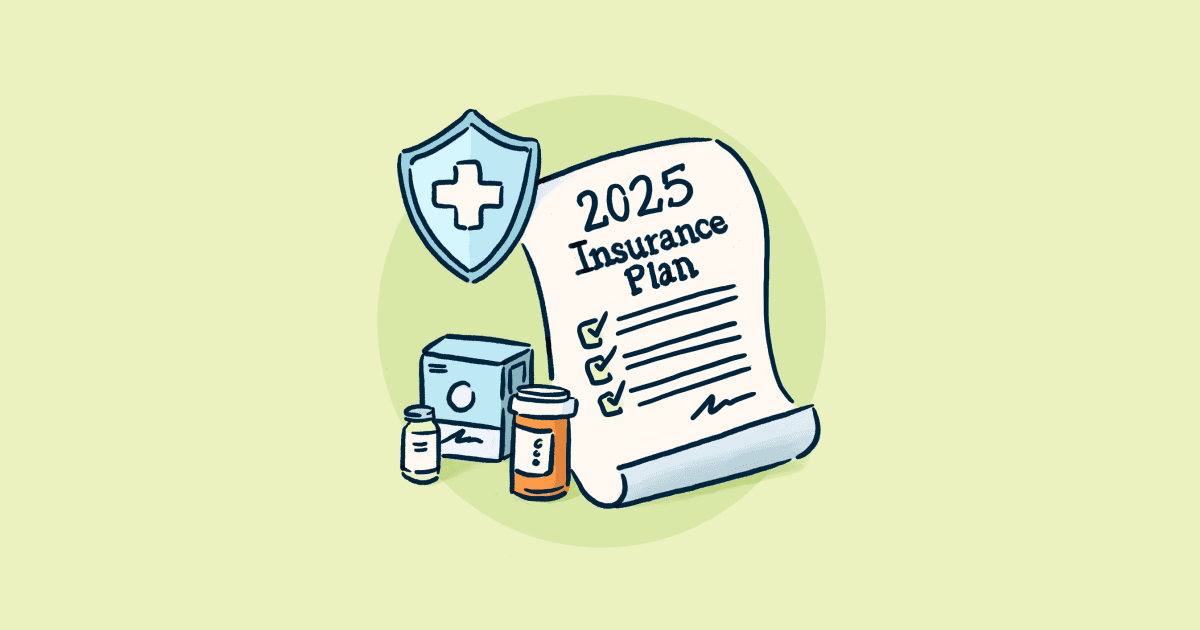A lipid panel is a simple blood test used to monitor your cholesterol levels and assess your risk of heart disease. Here’s a closer look at this important screening.
What does a lipid panel measure?
A lipid is a soft, fatty, waxy substance that does not dissolve in water and which moves through your bloodstream. There are two primary categories of lipids: cholesterol and triglycerides. Cholesterol is further divided into two main types:
Low-density lipoprotein (LDL) cholesterol (“bad cholesterol”)
High-density lipoprotein (HDL) cholesterol (“good cholesterol”)
While not inherently bad, high amounts of LDL cholesterol and triglycerides are associated with a greater risk for heart disease, heart attack, and stroke, as they can accumulate in the walls of your blood vessels over time. Meanwhile, HDL cholesterol helps remove excess LDL cholesterol from your body, hence its nickname of “good cholesterol.”
A lipid panel measures all of these components — LDL cholesterol, HDL cholesterol, and triglycerides — as well as total cholesterol, which is calculated by adding your levels of HDL and LDL cholesterol and 20% of your triglycerides.
Medical reasons for a lipid panel
Lipid panels are an important snapshot into your cardiovascular health, and a provider may order one for various reasons, including:
For routine screening as part of preventative care
To monitor the cholesterol levels of someone with other heart disease risk factors
To determine the effectiveness of cholesterol-lowering medications or lifestyle changes for someone with a diagnosis of high cholesterol or high triglycerides
To diagnose other health issues such as liver disease
Recommended screening frequency
If your cholesterol and triglycerides are in what your doctor considers to be a healthy range, it’s typically recommended to have a lipid panel every 4-6 years. If you have high cholesterol or a greater risk for heart health issues, you may need more frequent screenings. Consult with your doctor for tailored recommendations on screening frequency.
Lipid panel results
These are general guidelines for healthy cholesterol and triglyceride levels. Keep in mind that the definition of a healthy range depends on other factors and may vary by individual. Ask your doctor about your personal targets.
A healthy range for LDL cholesterol is typically considered to be less than 100 mg/dL
A healthy range for HDL cholesterol is typically considered to be higher than 40 mg/dL for men and higher than 50 mg/dL for women
A healthy range for triglycerides is typically considered to be less than 150 mg/dL
A healthy range for total cholesterol is typically considered to be less than 200 milligrams per deciliter (mg/dL)
Elevated cholesterol levels may result in a diagnosis of hyperlipidemia. This condition is characterized by high blood levels of cholesterol and/or triglycerides. High cholesterol is the most common form of hyperlipidemia, but the term also encompasses hypertriglyceridemia — a condition in which triglyceride levels are high — and mixed hyperlipidemia, a condition in which both cholesterol and triglyceride levels are high.
Treatment for high cholesterol and hyperlipidemia
High cholesterol and triglycerides can be managed through a combination of lifestyle changes and medication.
Lifestyle changes
Practicing a healthy lifestyle can support healthy cholesterol and triglyceride levels. Here’s what to prioritize.
Exercise
Moderate physical activity can help lower LDL cholesterol and increase HDL cholesterol. Aim for about 150 minutes of moderate-intensity aerobic exercise each week, or about 30 minutes five days a week. Not sure where to start with your fitness routine? We’ve got tips!
Diet
Limit your intake of saturated fats - dietary sources include red meat, full-fat dairy products, butter, lard, and shortening
Avoid trans fats, or partially hydrogenated oils, as much as possible - found in many processed and packaged foods
Prioritize unsaturated fats - dietary sources include olive oil, canola oil, tree nuts, and avocado
Prioritize fiber - dietary sources include beans, peas, lentils, oats, and whole grains
Smoking cessation
Avoid secondhand smoke as much as possible, and if you smoke, ask your healthcare provider for support making a plan to quit.
Moderate alcohol use
Heavy drinking can increase cholesterol. The CDC recommends no more than two alcoholic drinks per day for men and one for women.
Medication
While some people can manage elevated cholesterol and triglycerides with lifestyle changes alone, others need medication to lower their risk for heart health issues.
Statins, which act on the liver to prevent cholesterol from forming, are a first-line treatment for high cholesterol. Medications from this class include:
Atorvastatin (Lipitor®)
Fluvastatin (Lescol®)
Lovastatin (Mevacor®, Altoprev®)
Pitavastatin (Livalo®, Zypitamag®)
Pravastatin (Pravachol®)
Rosuvastatin Calcium (Crestor®)
Simvastatin (Zocor®)
Other medications used to treat high cholesterol include:
Ezetimibe (Zetia®), a cholesterol absorption inhibitor and the most commonly used non-statin cholesterol medication
ACL inhibitors such as bempedoic acid (Nexletol®), which target an enzyme to block cholesterol production in the liver and are often taken in combination with statins
Commonly prescribed triglyceride-lowering medications include:
Fibrates such as gemfibrozil (Lopid®) and fenofibrate (Antara®, Lofibra®, Tricor®, and Triglide®) - typically not recommended for individuals with severe kidney or liver disease
Niacin, a B vitamin that reduces the liver’s production of blood fats
Prescription-strength fish oil formulations such as Lovaza®
Medication typically isn’t prescribed for low HDL cholesterol alone, but if you have both low HDL and high LDL cholesterol and/or triglycerides, your provider may recommend medication.
The pharmacy care you deserve
At Alto, we make it as simple as possible to stay on top of your cholesterol-lowering medications. We offer convenient home delivery and medication management tools like reminders and auto refills in our app. And our expert pharmacists are always just a message away!
To learn more, reach out via in-app messaging.
This content is not intended to be a substitute for professional medical advice, diagnosis, or treatment. Always seek the advice of your physician or another qualified health provider with any questions you may have regarding a medical condition.
All third party trademarks (including logos and icons) referenced by Alto Pharmacy remain the property of their respective owners. Unless specifically identified as such, Alto’s use of third party trademarks does not indicate any relationship, sponsorship or endorsement between Alto and the owners of these trademarks.

















